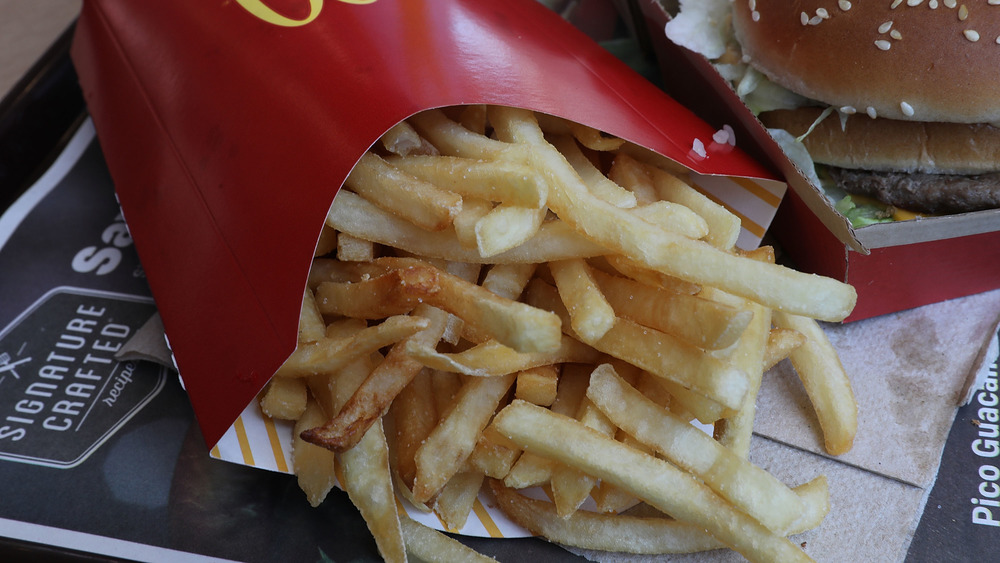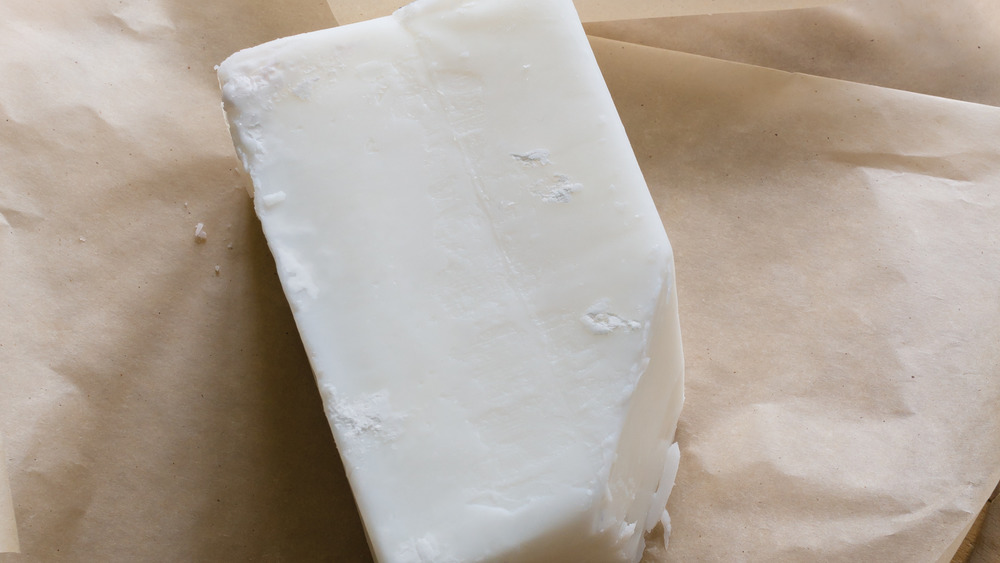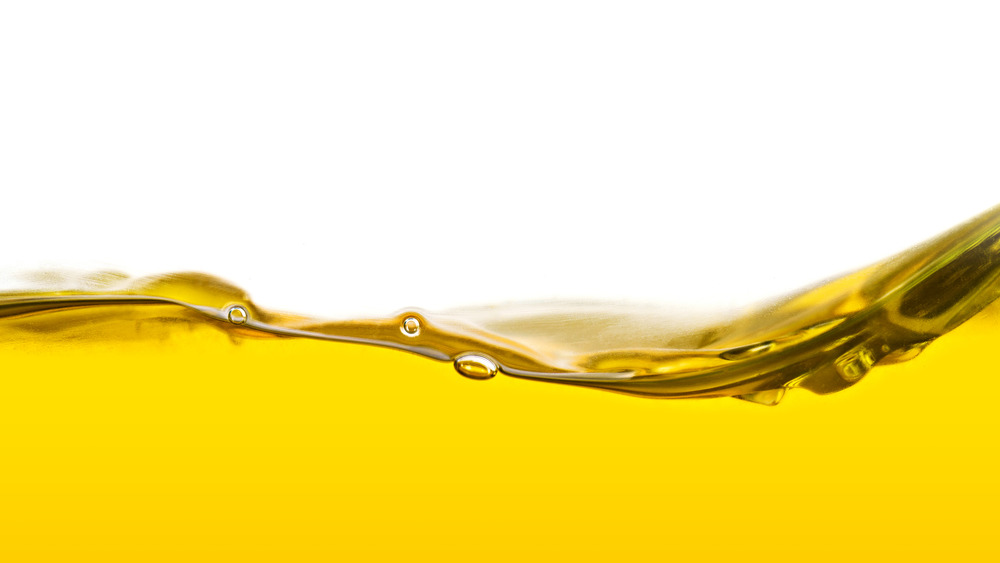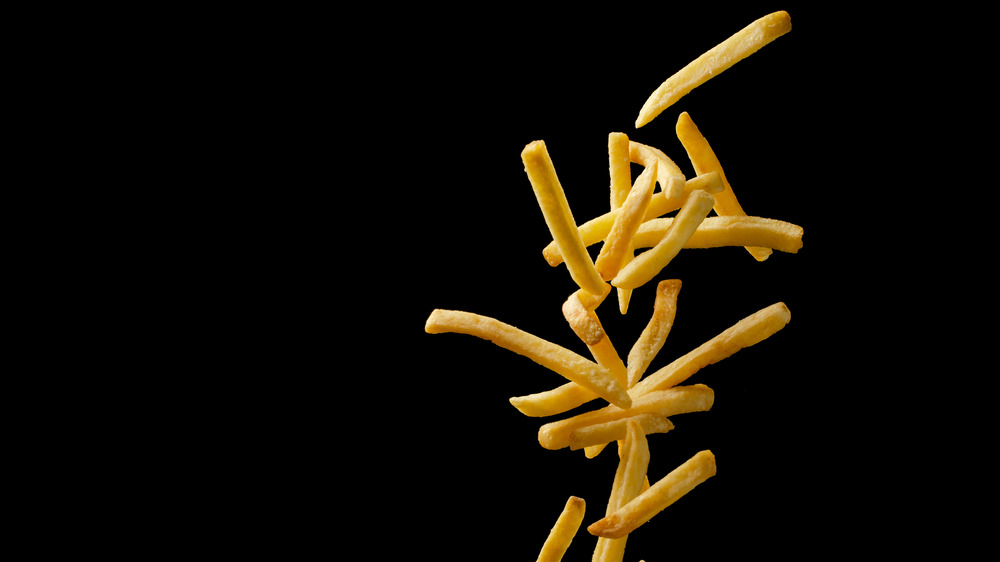The Real Reason McDonald's Fries Don't Taste As Good As They Used To
In his autobiography Grinding It Out: The Making of McDonald's, Ray Kroc recounts how a supplier once emphasized that the base of his franchise was not burgers, but fries: "Ray, you know you aren't in the hamburger business at all. You're in the french-fry business. I don't know how the livin' hell you do it, but you've got the best french fries in town, and that's what's selling folks your place." That was then and now, if FoodBeast is to be believed, it still holds true.
However, these two fries aren't the same. As Danny Jensen writes in a piece for Cheapism titled "Why McDonald's Fries Used to Taste Better" and retitled by MSN as the even more dramatic "The recipe tweak that ruined McDonald's fries," the fries have changed drastically. The original McDonald's french fries used to sizzle in a mixture called Formula 47, which consisted of oil and beef tallow, the solidified form of fat at room temperature. This was more for convenience that taste as the McDonald's oil supplier could not afford the machinery needed for vegetable oil while they sourced tallow from Chicago stockyards with ease.
In 1990, though, McDonald's swapped the tallow for vegetable oil due to a prolonged campaign conducted by Phil Sokolof, a multi-millionaire who made his money from producing construction equipment (via The New York Times). Ever since, the french fry that built McDonald's was merely good, not amazing.
Why McDonald's french fry ingredients changed
Phil Sokolof's ire was inspired by a heart attack that almost killed him when he was 43 in 1966. His cholesterol, according to a contemporary account given by the Tulsa World, reached into the high 300s, even though he exercised and refrained from smoking. The problem, in his words, was "the typical American diet, and a little worse." Namely, a lot of processed, grease-dripping, fast foods. He let it go however. Then, both his father and brother died due to heart attacks.
So, in 1985, he created the National Heart Savers Association, an organization that campaigned to make fast food companies switch from saturated fats to trans fats.
By 1990, Sokolof had his sights set on McDonald's and its tallow wallowing potato mounds of deliciousness. He placed a series of ads calling for McDonald's to reduce the fat in its hamburgers by ten percent. In response, McDonald's told AP that ″Just about everything in the ad except the spelling of McDonald's was inaccurate." However, in July, as recounted by a piece in Atlas Obscura, Dick Starman, McDonald's senior vice president, "debated" Sokolof on Good Morning America. The debate, though was more Sokolof going off on the quieted higher up: "[McDonald's] just took chicken skin out of their Chicken McNugget three weeks ago. Tell them about Egg McMuffins. Tell them about your beef tallow in your french fries." Shortly afterwards, McDonald's changed french fry recipe, removing beef tallow from the process, replacing it with vegetable oil.
Was the french fry recipe change worth it?
The switch to vegetable oil, however, might not be the best. As Time explained in 2016, consuming too much vegetable oil could increase the risk of heart disease. Wait! Wait. So, Sokolof's well intentioned pursuit to reduce heart attacks made the product taste worse and wreck worse damage upon us?
The confusion, as the piece continues to describe, is due to the fact that the subjects of the experiment that pushed for the switch to vegetable oils did indeed have lower cholesterol levels. By 14 percent, in fact. They just failed to also have lower rates of heart disease and other heart-related risks. Their failure went as far as to have a higher rate.
While researchers emphasize that vegetable oils still reduce cholesterol, they have now turned to trying to understand these results. One guess is that the sheer amount of oil consumed outweighed the benefits derived from making the switch to vegetable oil. In terms of this piece, then, McDonald's fries have probably become "healthier," but the amount of fries people consume remains a problem. And that, of course, is before we make note of the 180 mgs of sodium found in a small serving of fries, the 400 in the large, and the 260 in the medium. The American Heart Association recommends a maximum of 2,300 mg of sodium per day, but really thinks people should stick to 1,500 mg.
Obviously, fries aren't healthy. But then it makes the tallow removal seem somewhat pointless.
Finding the fry
Some of us, having heard of this legendary frite, will refuse to fritter our lives away without feeling its crispy skin gracing our lips. Fortunately, you can still make the decision to consume your animal-soaked potato if you also choose to visit Spokane, Washington. There lies Dick's Drive-in, an establishment that the Spokane Historical has granted icon status. More importantly for us, however, is that as ChowHound reveals, they sell McDonald's original fries.
Originally, its owner, Elmer "Abe" Miller, wanted to bring a McDonald's franchise to 1950s Spokane. McDonald's refrained. So, Miller travelled to California, took a job at McDonald's for as long as it took for him to understand the processes behind its food, and then returned to Spokane where he sold "McDonald's Original Food." The one comment on the piece agrees that the fries are good, but doesn't care for the burger.
Anyone not in close vicinity to Spokane, or those who would rather make the real thing, are also in luck. The recipe for McDonald's is available in the McMenu: Do-It-Yourself McDonald's Restaurant Recipes, a collection of McDonald's recipes from the '50s, '60s, and '70s. All the ingredients you need are potatoes, sugar, salt, Crisco, and, of course lard.



